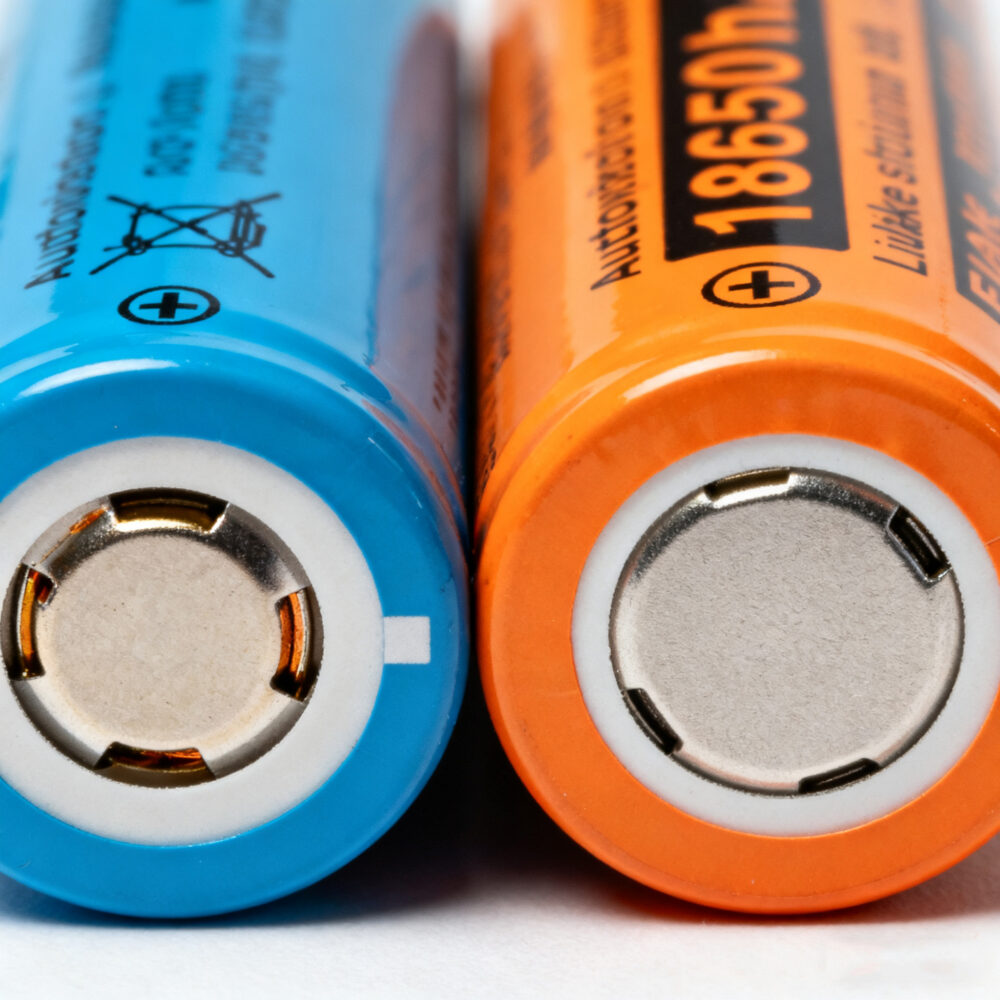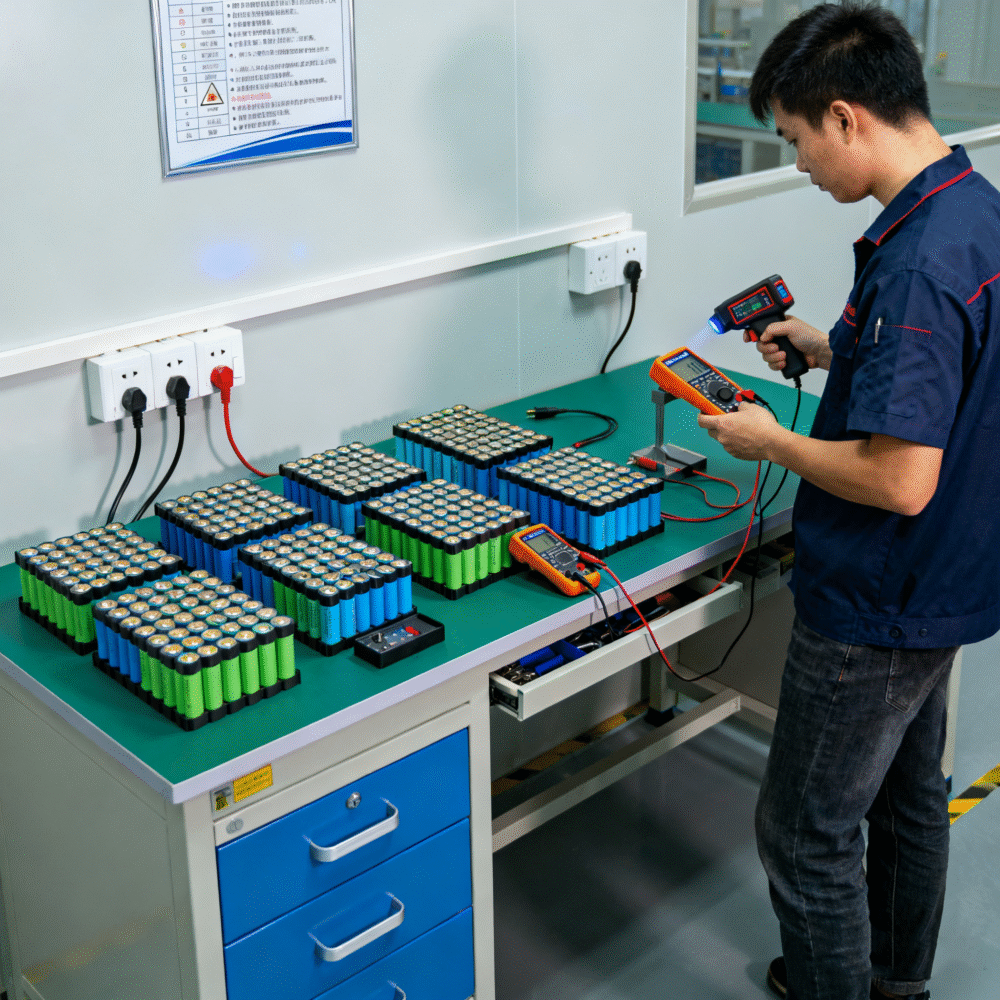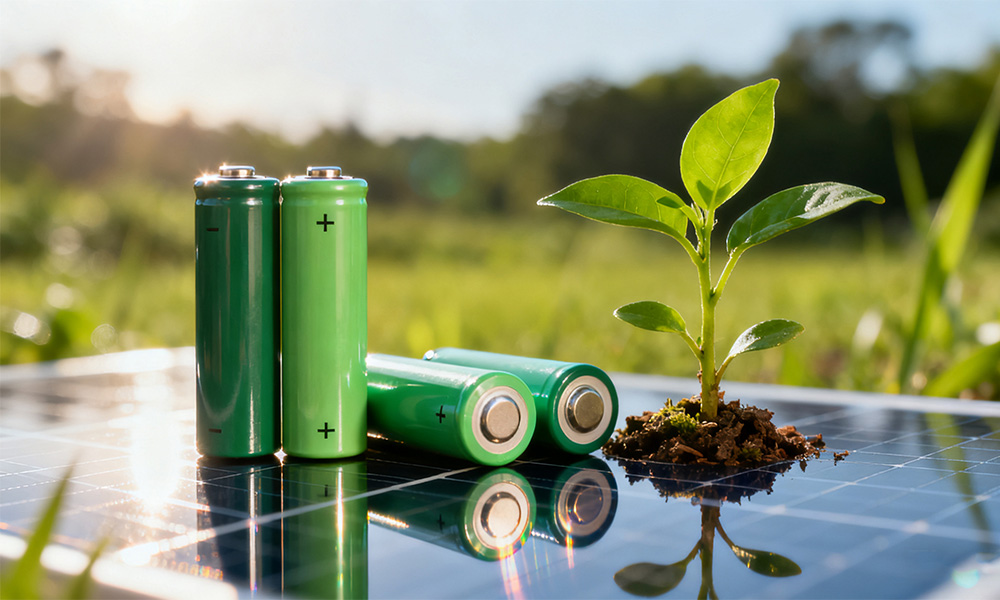When people talk about power today, they often mean more than just electricity — they mean mobility. From e-bikes to flashlights, drones to DIY projects, one small cylindrical cell has quietly become the backbone of portable energy: the 18650 lithium battery.
It’s everywhere — hidden inside the battery packs of your favorite gadgets, and yet, misunderstood by many who use it daily.
What Makes the 18650 Lithium Battery So Special
Let’s start with the name. “18650” isn’t random — it literally describes the cell’s size: 18mm in diameter, 65mm in length. That’s it. But inside that metal tube sits a balance between energy density, discharge rate, and lifespan that other formats still struggle to match.
While most batteries force a compromise between power and runtime, the 18650 walks that tightrope with remarkable grace. It can deliver continuous current for high-drain tools while storing enough capacity to run a flashlight for hours. This balance is what made it the blueprint for modern lithium-ion power.
The Hidden Details Everyone Ignores
Many newcomers chase the number on the label — the mAh (milliamp-hour) rating — assuming the higher, the better. But here’s the truth: not all “high-capacity” claims are real.
Any listing shouting “5000mAh” or more for a 18650 cell should raise a red flag. The physical chemistry of this cell size simply doesn’t allow that — at least, not safely. In reality, most genuine cells fall in the 2500–3600mAh range, depending on chemistry and design priorities.
Here’s where most people get tricked:
Some sellers wrap low-quality cells in fancy packaging and print inflated specs. They might even charge less, making it tempting — but that cheap thrill can come at the cost of poor cycle life, voltage drops, or even safety hazards under load.

Performance Isn’t Just About Numbers
When you dig deeper, you realize it’s not just about how much charge a cell holds, but how it delivers it.
Two cells might both be rated at 3000mAh, but one can safely discharge at 20A, while another can barely handle 5A before heating up. That’s why professional users — from EV builders to flashlight enthusiasts — care more about the Continuous Discharge Rating (CDR) than raw capacity.
Think of it like comparing athletes: one can run a marathon slowly, the other can sprint 100 meters at lightning speed. You pick depending on your game.
Real Quality Starts With the Source
Here’s a blunt truth the internet doesn’t always tell you:
Where you buy your 18650 lithium battery matters more than what’s printed on it.
Random online marketplaces are flooded with counterfeits and rewrapped cells. Community forums have been warning about this for years. The advice is consistent: avoid anonymous listings and “too good to be true” specs.
Good suppliers provide tested data sheets, clear discharge graphs, and real production traceability. That’s what separates a professional-grade cell from a gamble in a shiny wrapper.
Choosing the Right 18650 Lithium Battery for Your Use
Now, here’s where human logic (and a bit of experience) beats pure numbers:
- For high-drain devices – like tools, drones, or e-bikes – prioritize current rating (CDR). You need cells that stay cool even under heavy use.
- For low-drain but long-use setups – like power banks or solar lights – focus on capacity and cycle life.
- For pack building – consistency is king. Matching cells by internal resistance and age avoids imbalance and premature degradation.
Never mix different cell types in the same pack. It’s like trying to row a boat with one short paddle and one long — sooner or later, something will spin out of control.

Why Paying a Little More Saves a Lot Later
It’s tempting to grab the cheapest option, but let’s be honest — batteries aren’t just components, they’re safety-critical systems. A few dollars saved can turn into a costly failure down the line.
High-quality 18650 lithium batteries not only perform better, but also age more gracefully, holding charge even after hundreds of cycles. Cheap ones? They lose capacity fast and tend to puff, leak, or overheat when stressed.
Think of it as the difference between a trusted engine and a knockoff part — both might start your car, but only one will still be running strong next year.
The Future Still Belongs to the Cylinder
With all the new battery shapes and chemistries emerging, it’s fair to ask: is the 18650 still relevant?
Surprisingly, yes. The form factor remains incredibly efficient, and manufacturing lines around the world are optimized for it. It’s like the USB of the battery world — old, yes, but universally compatible and still evolving.
Newer chemistries are being packed into the same familiar tube, offering higher cycle life, better safety, and lower self-discharge. So while others chase the “next big thing,” the 18650 lithium battery quietly keeps powering the world, one cell at a time.


Leave a Reply